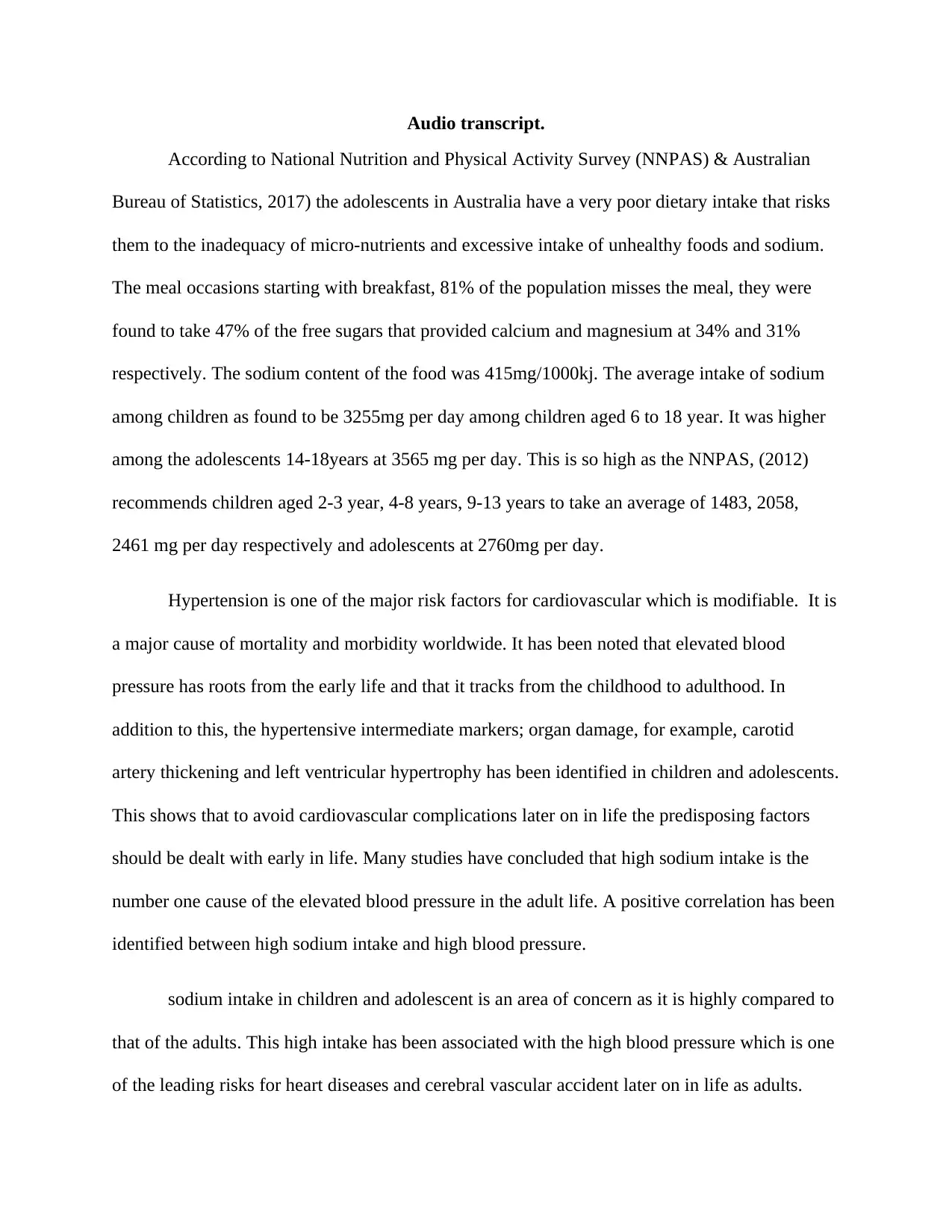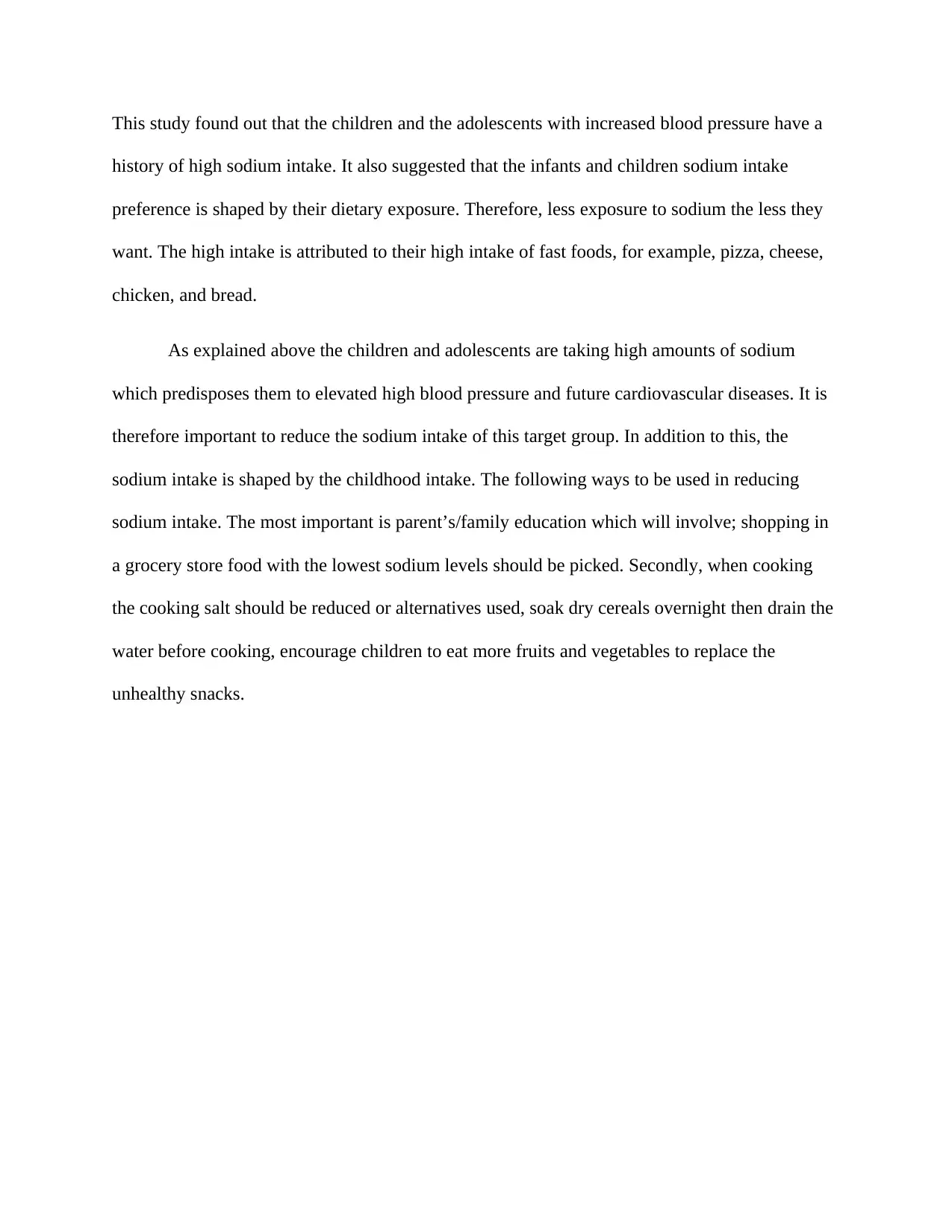Evaluating Sodium Intake and Health Risks in Adolescents-NNPAS Study
VerifiedAdded on 2023/06/10
|2
|578
|409
Report
AI Summary
This report examines the dietary habits of Australian adolescents, focusing on sodium intake as revealed by the National Nutrition and Physical Activity Survey (NNPAS) and the Australian Bureau of Statistics (2017). It highlights a concerning trend of poor dietary intake, leading to micronutrient inadequacies and excessive consumption of unhealthy foods and sodium. The report notes that a significant percentage of adolescents skip breakfast and consume high levels of free sugars and sodium, far exceeding recommended daily intakes. Elevated sodium intake is identified as a major risk factor for hypertension and subsequent cardiovascular diseases, with early life dietary exposure shaping sodium preferences. The report emphasizes the need for interventions to reduce sodium intake in this vulnerable population, suggesting strategies such as parental education, mindful grocery shopping, reduced salt usage in cooking, and increased consumption of fruits and vegetables. Ultimately, the report advocates for proactive measures to mitigate the long-term health consequences associated with high sodium consumption during adolescence.
1 out of 2








![[object Object]](/_next/static/media/star-bottom.7253800d.svg)